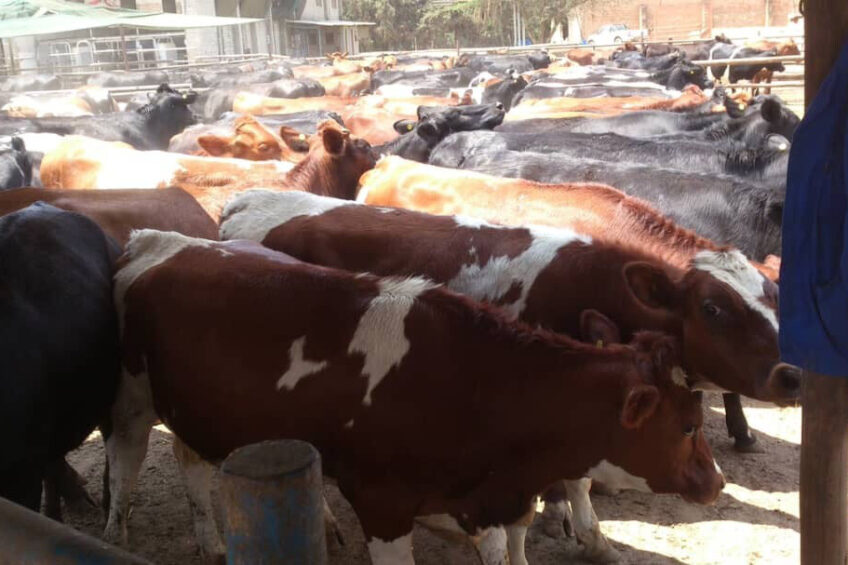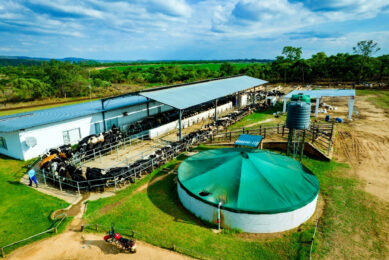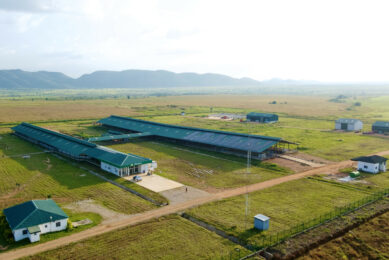Sweden backs Zimbabwe’s dairy sector with US$4m

Zimbabwe is achieving significant improvement in raw milk production with the country managing to produce 8.8 million litres of milk in August, compared to 7.8 million litres the same month in 2022; a 1 million litre increase.
After years of a slump, the country’s annual milk production is expected to reach 105 million litres this year, a gradual increase noted over the past 3 years. In 2022, milk production was 90 million litres, compared to 79.6 million litres recorded in 2021.
The national annual demand is 120 million litres and the remainder, to meet the target consumption, is imported. However, with the increase in milk production in Zimbabwe, losses are bound to happen due to poor handling, lack of technical expertise, incessant power and water shortages and low stock feed supplies.
Poor milk handling facilities have also for years negatively affected farmers’ earnings.
Mitigating dairy challenges
But to mitigate these numerous challenges, the Swedish government has availed US$4 million to Zimbabwe to support 10,000 dairy farmers. Also supported under the scheme are soybean growers, mostly the same targeted dairy farmers, who will grow the crop for the stock feed of the dairy herd.
The initiative, Inclusive Market-Oriented Value Chains for Economic Development (iMoved), which will run up to November 2026, was developed to help dairy and soybean farmers improve milk quality, processing, and search for better markets for the product.
It is also meant to increase Zimbabwe’s low milk intake which is 1 litre per person per month compared to South Africa’s 6 litres per person per month.
It is being implemented by Sweden-based poverty rights organisation, We Effect, under the Zimbabwe Agriculture Growth Programme – a project that promotes improved agricultural production. Other partners are the Zimbabwe Association of Dairy Farmers, Women and Land in Zimbabwe and Zimbabwe Dairy Industry Trust.
“The end goal is that we want to see increased incomes for smallholder farmers participating in the dairy and soybean value chains,” the Swedish embassy development co-operation deputy head of mission, Berthollet Kaboru, said.
Increase milk production and quality
Also commenting on the project, Agriculture Ministry permanent secretary, Obert Jiri, applauded the Swedish government for capacitating Zimbabwe’s smallholder farmers and was confident that this will increase production and processing of milk.
“The iMoved project is in line with the government’s thrust of the hub and spoke model whereby we link surrounding communities of smallholder farmers to what we call anchor or lead farmers. These anchor farmers or the hubs are the aggregation points and centres of excellence in terms of expertise,” he said.
“Our milk product imports from other countries were reduced by 17% from 8.9 million kg to 7.4 million kg last year, which was quite incredible. We want farmers to grow their own pastures and it becomes cheaper while enabling them to produce more quality milk. Let’s make sure that our cattle are fed, and we need to control diseases. We will be moving around the country to establish more milk processing centres.”
The latest milk processing centre – Doonside Milk Collection Centre – was set up in the Mutorashanga farming district in Mashonaland West Province under the We Effect programme. The commissioning of the milk collection centre, which has the latest storage and processing technology, will help farmers overcome different value chain challenges and increase their milk production and quality.
Under the programme, farmers bring their milk to centres for processing, and the aim is to value-add products before packaging and marketing, mostly in nearby towns and cities.
“We have also started producing banner grass silage, which is much cheaper to grow and maintain than regular corn, and it improves daily average milk output,” Doonside Farm dairy manager, Liam Steele, said.
Dairy farmers
Silvia Manomano, a farmer in Nyabira, a nearby farming community, added: “This is a huge achievement for a rural community. We bring our milk for processing at this centre and we hope that in the near future we are going to learn how to produce different milk products from the experts here. We greatly appreciate such efforts. We hope this will also be implemented in all rural communities.”
Another farmer, Chrispen Masango from Chitomborwizi, also a nearby farming area, said dairy production was an exciting venture but added that there was a need for local farmers to produce their own feed to make farming cheaper and more profitable.
“Experts advised us to start the diary programme using our own hard Mashona breed. There are lots of products that are produced from milk and we hope to start manufacturing them soon,’’ he said.
The Zimbabwe Farmers’ Union economist Nyasha Taderera said the milk processing centres are a positive step in the growth of the dairy industry. “It is a positive step towards improvement of the dairy sector. There will be a reduction of imports of milk powders. This also shows that milk consumption in the country will increase and there will be more investors in the dairy industry,” she said.
However, Livestock and Meat Advisory Council (LMAC) executive administrator Reneth Mano feels more needs to be done to create a clearly structured dairy investment fund that provides loans to farmers.
“The dairy industry is in dire need of a properly structured dairy investment fund to offer loans to trained and capacitated small to medium-scale dairy farmers. There is need for 3-5 year group capital investment loans for increasing the number of crossbred dairy cows per farmer under the scheme to a minimum of 5 within the next 3 years,” he said.
Zimbabwe’s dairy industry stands at 45,000 heads for a country with a population of 15 million people. However, veterinary expert, Mike Shoko, said: “I think Zimbabwe’s dairy herd is very [weak]. We are milking 30,000 cows to produce 105 million litres per year and I am convinced we are stretching these animals. We need to grow the dairy herd,” he said, adding that it should be a priority to grow the herd from 45,000 to where it is appropriate,” he added.
Join 13,000+ subscribers
Subscribe to our newsletter to stay updated about all the need-to-know content in the dairy sector, two times a week.










